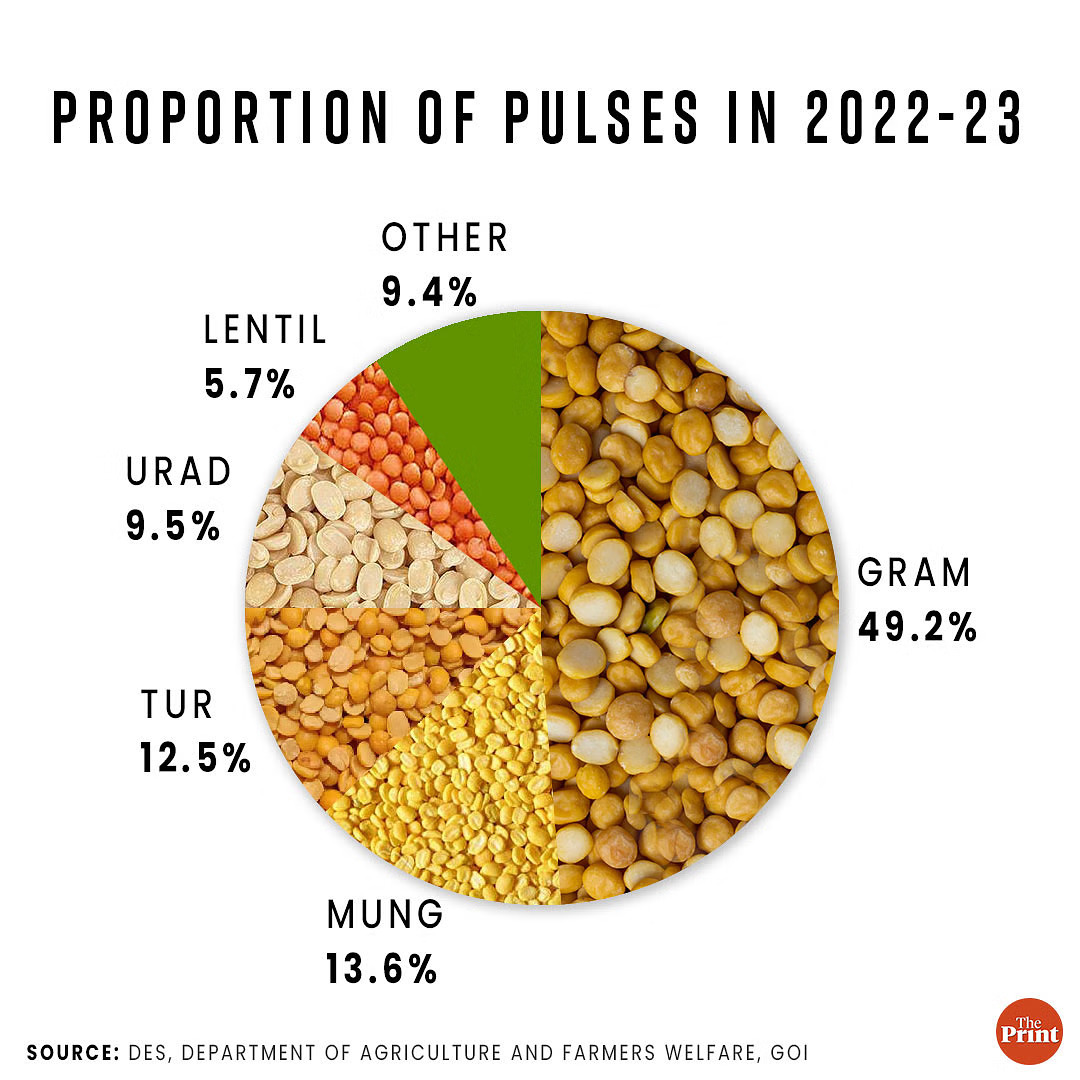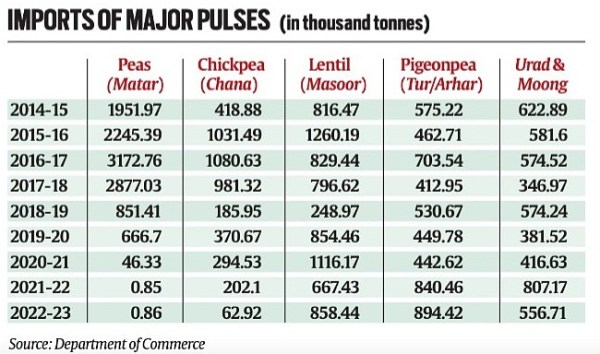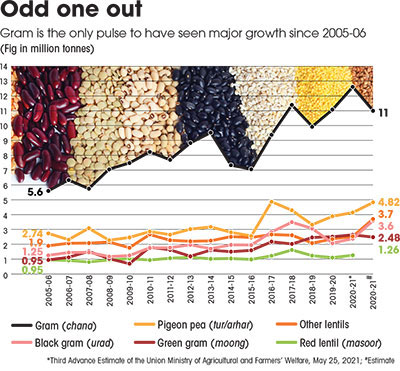- Home
- Prelims
- Mains
- Current Affairs
- Study Materials
- Test Series
India's Pulse puzzle
India''s pulses import almost doubled in 2023-24, it may rise further this year.
Overview of Pulses Imports:
- India''s pulses imports in fiscal 2024 surged by a staggering 84% compared to the previous year.
- Total imports reached 4.65 million metric tons, marking the highest volume since fiscal year 2018.
- Import value also saw a significant increase, rising by 93% to $3.75 billion.
Reasons behind Surge in Imports:
- Production Decline:
- Lower domestic production of pulses compelled India to boost imports to meet demand.
- The Ministry of Agriculture estimates pulses production in 2023-24 to be 234 lakh tonnes, which is lower than the previous year''s production of 261 lakh tonnes.
- The pulses sowing area has decreased by 16% from 2021-22 to 2023-24.
- Policy Adjustments:
- The Indian government allowed duty-free imports of specific pulses such as red lentils and yellow peas further fueled the surge in imports.
- Import taxes were removed as a strategy to reduce market prices ahead of upcoming elections
- Pulses inflation stood at 17% in March 2024.
Key Import Trends:
- Red lentil imports, particularly from Canada, more than doubled, surpassing 1.2 million tons.
- Yellow peas imports from Russia and Turkey witnessed a notable increase after duty-free imports were permitted.
- Black gram imports also saw a surge during the period.

Impact on Global Market:
- India''s increased imports have supported global pulses prices.
- Exporting countries such as Canada, Australia, and Myanmar have benefited from reduced stocks due to India''s higher demand.
- Mitigating Production Shortfalls:
- To compensate for production shortfalls, India also imported pigeon peas and chickpeas from various countries.
Historical Import Partners:
- Traditionally, India imports pulses from countries like Canada, Myanmar, Australia, Mozambique, Brazil, Tanzania, etc.
India’s Status with respect to Pulses:
- India is the world''s biggest importer, producer and consumer of protein-rich pulses.
- India accounts for 35% of the global acreage and 25% of the world''s production.
- The country also consumes 27% of the world''s pulses and imports 14%.
- Rajasthan, Madhya Pradesh, Maharashtra, Uttar Pradesh, and Karnataka are the top five states in India for producing pulses.
Why does India import pulses?
- High Domestic Demand: India is the largest consumer of pulses in the world.
- Pulses are a staple part of the Indian diet, serving as a primary source of protein, especially in vegetarian diets.
- Insufficient Production: Despite being one of the largest producers of pulses, India''s production does not meet its domestic demand.
- Price Stability: Importing pulses helps stabilize prices in the domestic market.
- During years of low yield due to poor weather conditions or other agricultural problems, prices of pulses can skyrocket.
- Variety and Quality: Imports also provide access to different varieties of pulses that may not be domestically produced in India.

Pulses:
- Pulses are the dry seeds of leguminous plants, like lentils, chickpeas, dry peas, and beans.
- They are a vital source of protein and amino acids for people around the world.
- Pulses are grown in India during the Kharif, Rabi, and Zaid seasons of the agricultural year.
- Kharif: Pigeon peas and other pulses are grown during this season.
- Rabi: Chickpeas, lentils, lathyrus, field peas, and kidney beans are grown during this season.
- Rabi pulses account for more than 60% of the total production.
- Zaid: Cow peas are grown during this season.
- The nitrogen-fixing properties of pulses enhance soil fertility, leading to increased productivity of farmland.

Initiatives taken to promote Pulses:
- National Food Security Mission (NFSM): It aims to increase pulse production through productivity enhancement and area expansion.
- This program also includes restoring soil fertility, creating employment opportunities, and improving farm economy.
- Rashtirya Krishi Vikas Yojana (RKVY): States can promote pulses with approval from the State Level Sanctioning Committee (SLSC).
- Pradhan Mantri Annadata Aay Sanrakshan Abhiyan (PMAASHA) Scheme: It aims to ensure MSP for farmers.
- It includes procurement of Pulses and Copra under the Price Support Scheme.









 Latest News
Latest News
 General Studies
General Studies